This is not a “paleo lifestyle”. This is not a survival scenario, or even exercise.
This story is about thriving.
My friend Jordan and I spent a week in the wilds of Oregon, reflecting on the way my ancestors lived. We packed one cup per day each of dried food provisions, as well as some oil and salt. But while I did base my provisions on something comparable to what my Delaware and Caddo tribal ancestors may have traveled with, like beans and wild rice, this is not a re-enactment or emulation of any specific indigenous culture. This is just an opportunity for us to reflect on living a simpler life.
The route we traveled has been a passageway for Native Americans living in the region for millennia. In the 19th century, it was used by the ranchers and miners who settled in Hells Canyon.
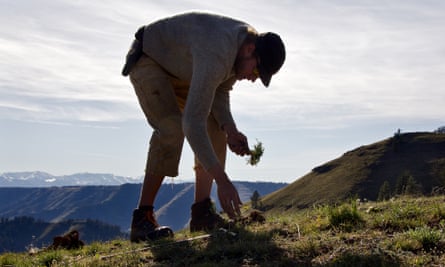
Biscuit roots are several varieties of edible lomatium plants that were harvested by the Nez Perce (Nimiipuu) people who lived here, and by bears and other animals long before people. (Watching what bears eat is a good clue as to what humans can consume, aside from the occasional “questionably dated” meat or fish.)
The Nez Perce tribe planted back these perennial roots after harvesting their seeds in the fall, essentially forming permaculture root gardens across the prairies and canyons of what is now eastern Oregon and western Idaho. They are delicious when cooked and tasty raw or dried.
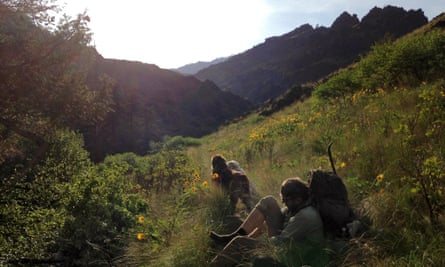
On our second day, we held high hopes of reaching the Snake river and catching many fish and finding plentiful forage. Jordan decided to only consume wild animal protein that week, but I’d brought some jerky, a small bit of which I ate at night.
Jordan’s provisions were rice, dehydrated refried beans, peanut butter, and bouillon. Mine were dehydrated refried beans, rice, cornmeal, and jerky. It translated to one cup of provisioned food per day each. We shared oil and salt for cooking and curing fish (my ancestors would have used bear fat).
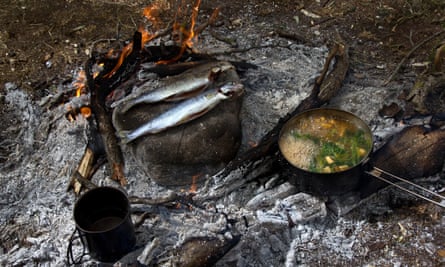
Two hundred years ago, the Nez Perce would have had fish traps set up, and wooden scaffolding built to dip net salmon and steelhead with long poles and nets woven from Dogbane “hemp”. There also would have been thousands more fish migrating up this river before the damming and industrialization of the Columbia and Snake river corridors.
The Oregon department of fish and wildlife guidelines call for consumption restrictions on Snake river fish because of mercury toxicity, in particular with bass like the one caught here. Even though we did manage to eat mostly trout as opposed to the easier-caught bass, we definitely exceeded the recommended weekly maximum mercury intake.

The Nez Perce are still able to fish with traditional net styles in these waters. But two backcountry dirtbags like us living off the land today are limited by law to certain tools and methods, as well as what and how much we can catch (while I do have a federal tribal enrolment, this is not my tribe’s traditional territory so I do not have the right to use traditional means).
During our time at the bottom of Hells Canyon, we fell into the habit of not consuming much, if anything, in the morning, and spending the day catching fish and gathering wild edibles not too far from camp. We would then prepare and eat our single large meal sometime in the afternoon. This method of shrinking our diet and riding the hunger instinct worked well for days spent close to camp, during which we would not expend much energy (root digging was the hardest physical task).

Cordage is one of the most important tools one can possess in the wilderness. It can be used for everything from nets, snares, and shelter lashing to a tourniquet in a medical emergency. The Nez Perce were famous among other tribes for the fishing nets they wove from these fibers and traded all over the west.
We improvised a fish smoker by erecting an alder tripod over the fire, placing our willow switch stringers on it, and using our tent flies to chimney the smoke up through the fish. We needed the protein to fuel our trip back out of the deepest canyon on the continent.
It is almost magical what alder smoke and a little salt can do to fish. It took about 24 hours to complete the process, although our smoking was rudimentary and not as efficient as it could have been. The ancient process of smoking fish and meat to preserve it was once common to all of our ancestors, no matter what land they came from.
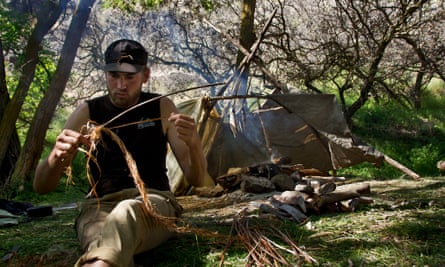
Sitting in camp, quietly watching smoke dance through those fish and perform its timeless task, I was transported back to the lives of my ancestors who had done the same thing generations before me. I felt thousands of years of human history, my family’s genes and the stories embedded in them flowing through me.
I thought of my great-grandfather’s great-grandfather, John Conner, the first principle chief of the Delaware Tribe (Lenni Lenape) in Oklahoma after a 200-year exodus from our homeland in the Eastern Woodlands and Coastlands.
In the 1820s, before he became chief, he walked alone from Illinois to what is now the Oregon Coast, as he had long dreamed of seeing an ocean. He lived off the land and befriended many tribes and cultures on his journey. Later, he traveled to Mexico through California before finally returning to lead his people, having become famous among the frontiersmen for possessing more knowledge of the North American continent than most people of his day.
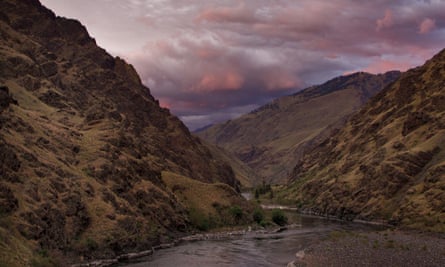
A soft sunset over the Snake river during the last night before our journey out of the canyon had me reflecting on my week so far subsisting from the land and river. All life on this planet is my family.
I believe mindset is the most important “survival skill” we have. Perspective is the difference between surviving (which implies some adversarial threat that must be vanquished and escaped from), and thriving.
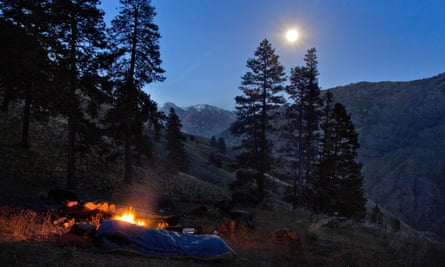
Surviving is trying to escape what we call home. Surviving is trying to get out; thriving is trying to get in. I believe the proper approach begins by knowing the so-called “resources” the earth offers are gifts. A gift is something that is received, not taken. To take something is an act of violence. To receive something is an act of love.
Truly learning to understand the difference between surviving and thriving is a lifelong education that never ends, even for the wisest elders; but it begins with understanding that the earth and all its life are more than just resources – they are family.
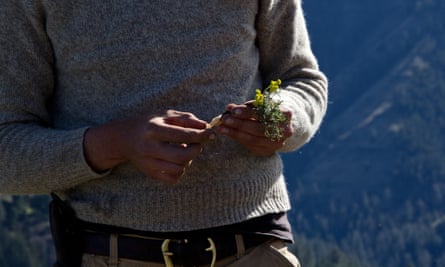
As we rested at the top of the canyon on day seven, Jordan asked me what I thought I might change about my life after this experience. I know it will serve as a powerful reminder to live in a good way on this planet and with all other life upon it. These moments will forever remind me that less is more. Less consumption, less dependency on the trappings of consumption, less ignorance about sustainable options.
Finally, experiences like this remind me to not take for granted some of the amazing things our intelligence and technology have brought us. This isn’t a rejection of modern society and technology. This is a reminder to treat every opportunity we have to advance and grow as an opportunity to understand our planet better – which includes the gift of our own intelligence.
Almost always, less is more. As Onondaga chief Oren Lyons once said:
“We don’t call a tree a resource. We don’t call the fish a resource. We don’t call the bison a resource. We call them our relatives. But the general population uses the term resources, so you want to be careful of that term – resources for just you?”
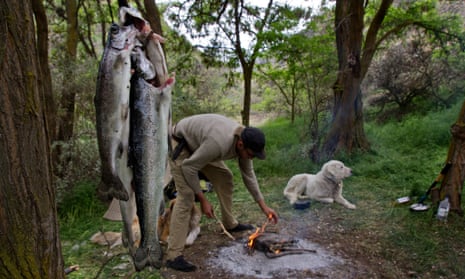
Comments (…)
Sign in or create your Guardian account to join the discussion